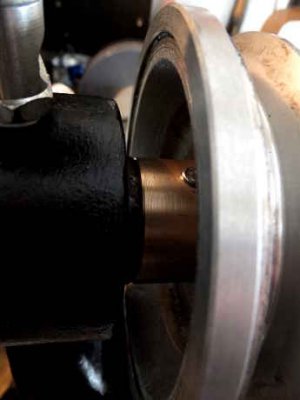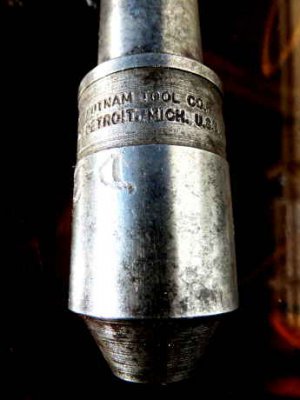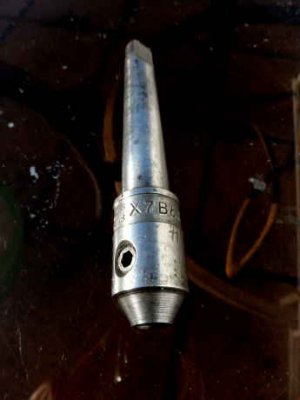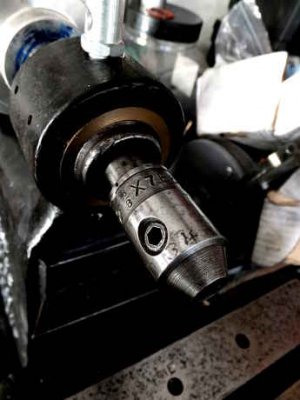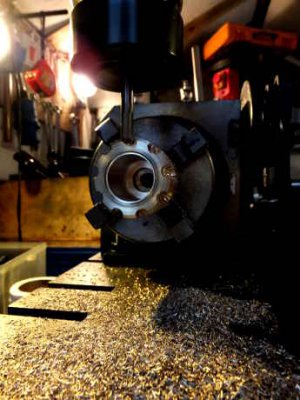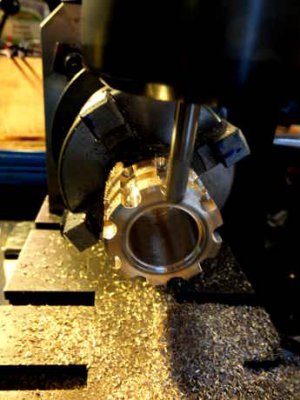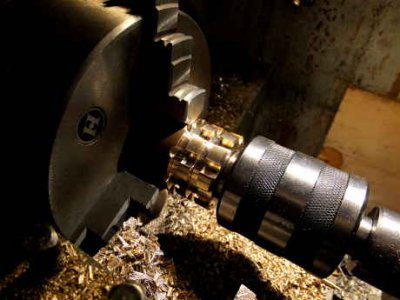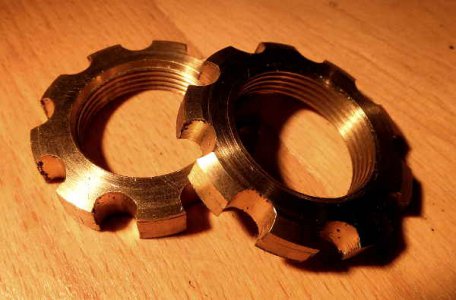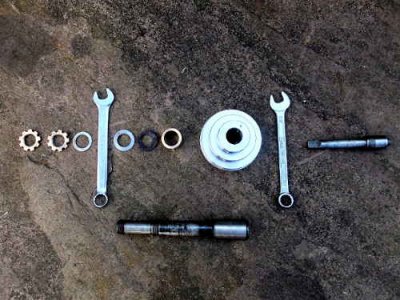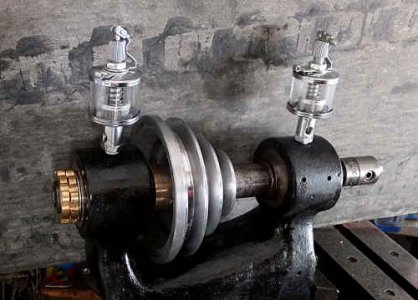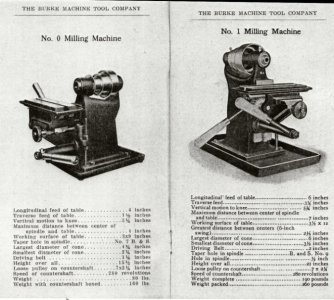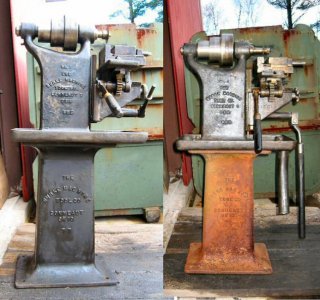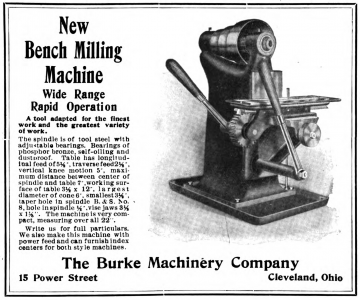- Joined
- Jul 2, 2014
- Messages
- 107
Managed to find some time between trips to do a little more work on the spindle locking arrangements. As previously noted, there should be two locking nuts behind and two in front of the rear bearing. Of the four, only one was present on the machine - in front of the bearing. Unlike the portion of the spindle behind the bearing (which is completely threaded), the spindle in front of the bearing has unthreaded space available forward of the threaded portion. Because of this, I was able to make a bronze collar as backup for the existing nut instead of a second nut. No threading required, you see - just a drilled and tapped hole for a grub screw which rests against the unthreaded portion of the spindle. In this way I avoided damaging the existing threads with the grub screw. Because there is minimal thrust, this grub screw probably won't need a locating point drilled in the spindle.
